IFRS 15 – Revenue from Contracts with Customers (IFRS 15), which became effective from 1 January 2018, makes significant changes to accounting for revenue.
In this article we highlight the fundamental changes introduced by IFRS 15 and use a case to show the steps in determining revenue.
When is Revenue Recognized?
An entity recognizes revenue when it transfers control over the goods or services to the customer. Under the earlier standards, IAS 18 and 11, revenue is recognized on transferring risks and rewards to the customer.
The Five Step Model
IFRS 15 sets out a process for determining revenue called the five-step model. The five steps are:
- Identify the contract(s) with the customer
- Identify the separate performance obligations in the contract
- Determine the transaction price
- Allocate the transaction price to separate performance obligations
- Recognize revenue when (or as) each performance obligation is satisfied
We discuss the various steps and use the case below to show how to apply the five-step model.
Case
NABY Construction Ltd (NABY) is a real estate firm that builds houses for sale. The business practice of NABY is to enter into a sales agreement with a customer only when the house is fully built and ready for sale. It also provides after-sales services for lawn maintenance and cleaning.
In March 2018, NABY agreed to sell to Customer A, a fully built 6-bedroom house and to provide after sales service for 36 months, starting from April 2018.
Total consideration agreed is GHC 400,000. The standalone selling prices are GHC 330,000 for a 6-bedroom house and GHC 120,000 for the 36 months after sales service. Customer A will pay VAT, NHIL and GET Fund levies of GHC 72,500 on the total consideration agreed. What is the revenue earned in 2018?
Now, let’s go through each of the steps.
Step 1: Identify the Contract With the Customer
A contract is an agreement between two or more parties that creates enforceable rights and obligations. The parties involved must approve the contract. The article, “What is a contract under IFRS 15?” discusses the criteria for a contract to be valid for IFRS15.
In the case, a contract exist as there is an agreement for Customer A to exchange consideration of GHS 400,000 for a 6-bedroom house and a 36 month after sales service.
Step 2: Identify the Performance Obligations in the Contract
Once there is a contract between the parties, the entity must identify the goods or services promised in the contract. What goods or services must the entity transfer to the customer?
Under the contract, what is the entity required to deliver to the customer? What the contract requires the entity to transfer or deliver to the customer is the entity’s performance obligation.
NABY has an obligation to provide a 6-bedroom house and 36 months after sales service.
NABY also concludes that the 6-bedroom house and the 36 months after sales service are distinct, as Customer A can use the 6-bedroom house without after sales service.
Step 3: Identify the Transaction Price
The amount an entity expects in exchange for transferring promised goods or services to a customer is the transaction price. This excludes amounts collected on behalf of third parties e.g. Value Added Tax (VAT).
The transaction price is the GHC 400,000 that Customer A will pay to NABY to purchase the 6-bedroom house and 36 months of after sales service.
The price excludes VAT, NHIL and GET Fund levies of GHS 72,500 collected on behalf of the government.
Step 4: Allocate the Transaction Price to the Performance Obligations in the Contract
After determining the transaction price, the next step is to allocate the transaction price to each performance obligation in the contract. Price is allocated to each obligation based on the relative standalone selling price of each performance obligation.
Standalone selling price is the price at which a seller sells a promised good or service separately to a customer.
Supply of the 6-bedroom house and 36 months after sales service are separate performance obligations, so the transaction price is allotted to each obligation in proportion to their standalone prices.
The transaction price allotted is:
6-bedroom house = (GHS 330,000/GHS 450,000) × GHS 400,000 = GHS 293,333
36 months after sales service = (GHC 120,000/GHS 450,000) × GHS 400,000 = GHS 106,667
Step 5: Recognize Revenue as the Entity Satisfies a Performance Obligation
An entity satisfies its performance obligations when it transfers the promised goods and services to the customer. An asset is transferred when the customer gets control over the asset.
A customer gets control of an asset when he can direct the use of, and get most of the remaining benefits, from the asset.
The transfer of the promised goods and services can occur at a point in time, such as when NABY hands over the keys to the house to Customer A.
The transfer of promised goods and services can also occur over time, such as when NABY provides the cleaning services over the 36 months.
Revenue is recognized when the promised goods and services are transferred to the customer. As the transfer can occur at a point in time or over time, we can recognize revenue at a point of time or over time.
In the case, revenue for the 6-bedroom house of GHS 293,333 is recognized at a point in time, on March 2018 when the fully built 6-bedroom house is transferred to Customer A.
However, revenue for the after sales service is recognized over time as NABY performs the after sales service, starting from April 2018.
Revenue recognized in 2018 for the after sales service will be GHC 26,667 (9/36 × GHC 106,667).
Total revenue for 2018 will be GHC 320,000 (GHC 293,333 + GHC 26,667)
Take Away
- IFRS has significantly changed accounting for revenue. Revenue is recognized at the point control passes.
- To help you do that you must apply the five-step model.
- You must determine the point at which control passes to the customer in your business.
If you need help with accounting for revenue under IFRS 15, please feel free to get in touch with us.
For more blogs and information please follow SCG Chartered Accountants on Facebook, Twitter, Youtube and LinkedIn.

